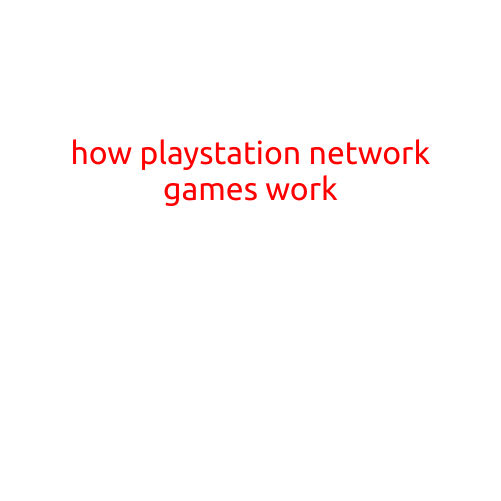
How PlayStation Network Has Changed: A Look Back at Its Evolution
The PlayStation Network (PSN) has undergone significant transformations since its launch in 2006. From its humble beginnings as a simple online gaming platform to its current status as a comprehensive entertainment ecosystem, PSN has come a long way. In this article, we’ll take a journey through the evolution of PSN and highlight the key changes that have shaped it into what it is today.
Early Days: PSN 1.0 (2006-2009)
When PSN first launched alongside the PlayStation 3 in 2006, it was a relatively basic service. Gamers could play online multiplayer games, download free demos, and purchase digital content such as movies and TV shows. The service was plagued by connectivity issues and was criticized for its poor user interface and limited features.
PSN 2.0: The Turning Point (2009-2011)
In 2009, Sony released an updated version of PSN, dubbed PSN 2.0. This overhaul introduced a new user interface, improved game streaming, and the ability to purchase and download full games directly from the PlayStation Store. PSN 2.0 also introduced the concept of “Friends” and “Blocks” to help users manage their online relationships and content.
The Great PSN Hack (2011)
In 2011, PSN was hacked, resulting in the theft of personal data from over 77 million accounts. The incident led to a lengthy network outage and a major overhaul of PSN’s security features. In response, Sony implemented new security measures, including password resets, improved data encryption, and regular system updates.
PSN 3.0: The Rise of Social Features (2012-2014)
In 2012, PSN 3.0 was launched, bringing with it a range of social features designed to encourage gamer interaction. The service introduced features like “Friend Ratings” and “Trophies,” which allowed users to compare their gaming progress and achievements with friends. PSN 3.0 also introduced the “PlayStation Vita” handheld console, which added portability to the gaming experience.
PSN 4.0: The Shift to Entertainment (2015-2018)
PSN 4.0 saw PlayStation evolve from a gaming-focused platform to a comprehensive entertainment ecosystem. The service introduced a range of new features, including:
- PlayStation Now: A game streaming service that allowed users to play high-quality games without needing to download or install them.
- PlayStation Vue: A live TV streaming service that offered users access to a range of TV channels and on-demand content.
- PlayStation Music: A music streaming service that allowed users to access a vast library of songs and playlists.
PSN 5.0: The Modern Era (2019-Present)
PSN 5.0 has focused on further enhancing the gaming experience through the introduction of new features like:
- Rise of the ‘PlayStation Stars’ Program: A loyalty program that rewards users for completing specific gaming challenges and achievements.
- PSN Updates: Regular system updates that improve performance, add new features, and enhance security.
- Cross-Play Support: The ability to play games with users across different PlayStation platforms, including PC and Xbox.
Conclusion
The PlayStation Network has undergone a significant transformation since its launch in 2006. From its humble beginnings as a simple online gaming platform to its current status as a comprehensive entertainment ecosystem, PSN has evolved to meet the changing needs of gamers and entertainment enthusiasts. As the gaming landscape continues to shift, it will be interesting to see how PSN adapts and innovates to remain ahead of the curve.





